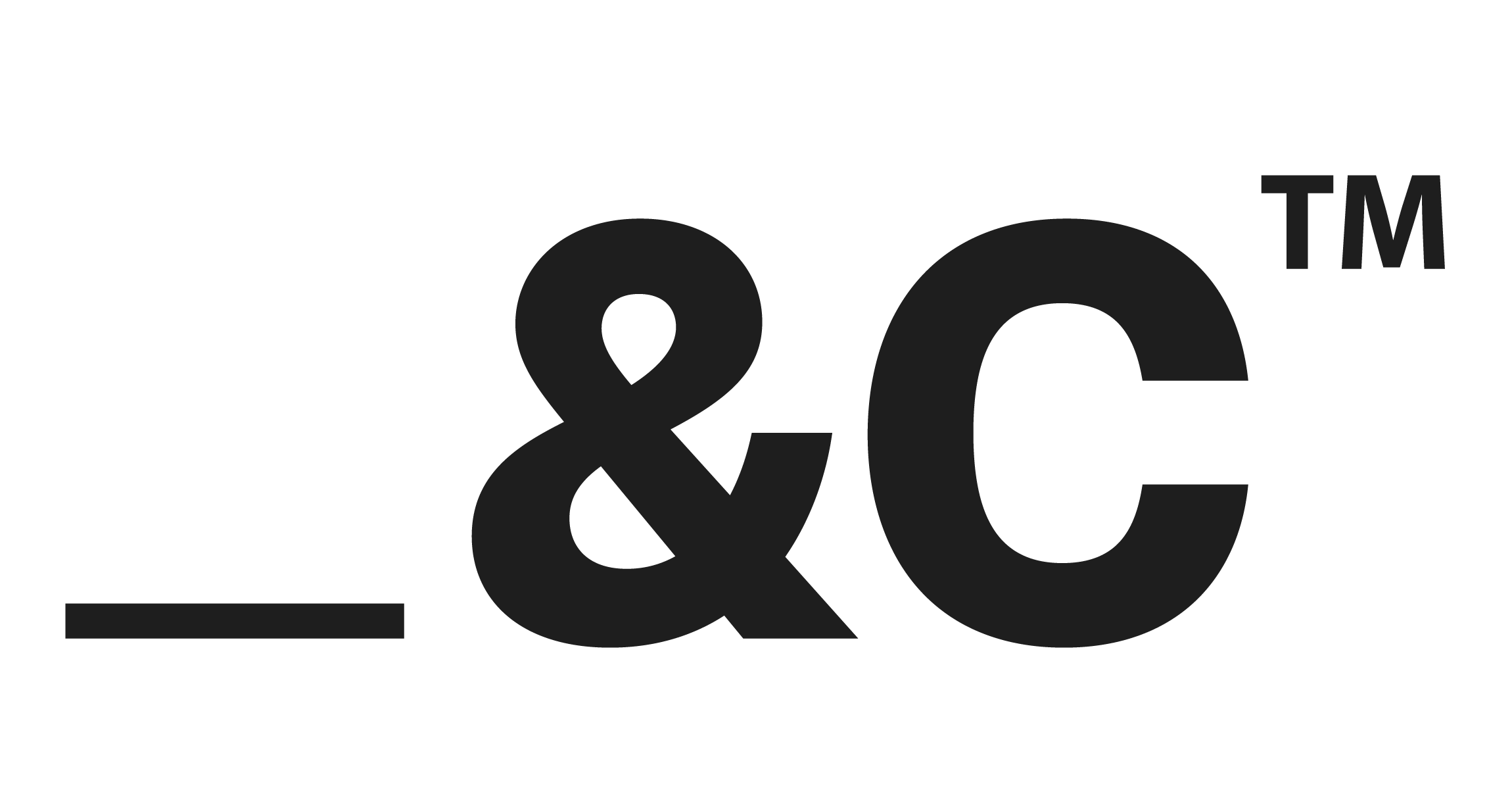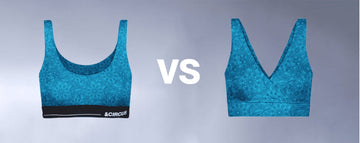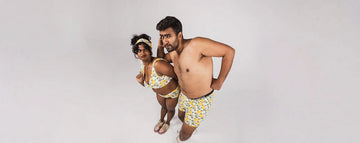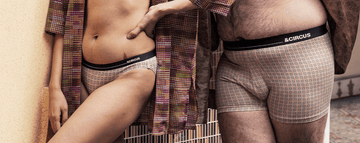Picture this: you're standing in the fluorescent glow of a department store, surrounded by racks of underwear that seem to whisper one thing conformity. For years, the intimate apparel industry has churned out garments that cater to a narrow vision of gender, body, and beauty. But a quiet revolution is underway. From queer entrepreneurs crafting gender-neutral briefs to designers weaving sustainability into every seam, the world of innerwear is shedding its outdated skin. This isn't just about underwear it's about dignity, identity, and a future where everyone feels seen.
Uncomfortable underwear shouldn't steal your confidence. At Andcircus, we craft ultra-soft, sustainable Lenzing Modal Micro® innerwear for every body, XS to 5XL. From briefs to bras, our custom packs fit you perfectly. Shop risk-free with our 100% satisfaction guarantee and embrace comfort that includes everyone. #LoveEveryBody. Shop Now!
Inclusive Innerwear: A Movement in Motion
The term “inclusive innerwear” might sound like a marketing buzzword, but it's far more than that. It's about designing for the full spectrum of human experience every gender, body type, and life stage. As body positivity gains traction and sustainability becomes non-negotiable, the demand for underwear that reflects real lives is surging. Brands like them. highlight how traditional lingerie giants like Victoria's Secret, with their rigid ideals of femininity, often alienate trans, nonbinary, and gender-nonconforming folks. The article notes, “For those who are trans, nonbinary, or gender-nonconforming, trips to any mass market underwear store are marred with dysphoria and discomfort.” Enter a new wave of queer-led brands, building underwear that feels like a celebration of self, not a compromise.
At the heart of this shift is a commitment to eco-friendly materials like micromodal, a plant-based fabric prized for its softness and sustainability. These brands aren't just rethinking fit they're reimagining the entire lifecycle of a garment, from production to wear. They're also sizing for real bodies, including maternity wear and adaptive designs, ensuring that no one is left out of the conversation.
Beyond Binaries: Redefining Intimate Apparel
The innerwear market is booming, and the numbers tell a compelling story. According to Market Research Future, the intimate wear market, valued at $44.59 billion in 2024, is projected to reach $46.77 billion in 2025 and climb to $71.82 billion by 2034, with a steady CAGR of 4.9%. Meanwhile, DataHorizzon Research pegs the men's underwear and women's lingerie market at $140 billion in 2023, forecasting growth to $250 billion by 2033 at a CAGR of 6.8%. What's driving this? Millennials and Gen Z, who prioritize comfort, self-expression, and sustainability, are reshaping what underwear can be.
Gender-neutral designs are no longer a niche they're a necessity. From seamless boxer briefs to bras that defy traditional sizing, brands are dismantling the binary norms that once dominated. Plant-based fabrics like micromodal are gaining ground, offering breathability and a lower environmental footprint. Technological leaps, like smart-fit sizing systems and seamless construction, are making underwear more comfortable and accessible. It's a far cry from the days when Victoria's Secret ruled the roost, its market share slipping from 32% in 2015 to 19% in 2020, as reported by Glamour. The industry is listening, and it's adapting fast.
Designing for Dignity: Voices Leading the Charge
Across the industry, thought leaders are turning vision into reality. Designers are collaborating with LGBTQIA+ and disability advocacy groups to create underwear that doesn't just fit but affirms. Take maternity lines: they're no longer an afterthought but a cornerstone of inclusive design, accommodating hormonal shifts and body changes with grace. Post-surgical supportwear, too, is gaining traction, offering comfort and functionality for those navigating recovery. One designer, quoted in them., spoke of crafting underwear “with this specific discomfort as motivation,” aiming to make shopping an affirming experience for queer people.
Sustainability consultants are pushing for materials that don't just feel good but do good. Micromodal, for instance, isn't just soft it's biodegradable and derived from renewable sources. Fashion activists are also weighing in, advocating for designs that honor diverse identities. These collaborations are more than feel-good stories; they're proof that inclusivity isn't a trend but a transformation. Brands are listening to real people trans folks, disabled individuals, expecting mothers and building products that reflect their needs.
The Gaps Holding Back Progress
But the road to inclusivity isn't without bumps. Mainstream retail channels still lag in offering inclusive sizing, leaving many shoppers frustrated. Sustainable fabrics like micromodal, while eco-friendly, come with higher production costs, making scalability a challenge. Then there's cultural resistance some consumers and retailers cling to outdated notions of what underwear “should” be. As them. points out, traditional brands often promote a “cisheteronormative idea of gender and sexuality” that feels exclusionary to many.
Balancing aesthetics with function is another hurdle. Adaptive garments, like those for post-surgical or transitional needs, must be practical yet appealing a tall order. Education is key, too. Many shoppers aren't yet aware of the inclusive options available or why they matter. Brands face the task of not just designing better products but telling better stories to shift perceptions.
Inclusivity as a Growth Engine
Despite these challenges, the business case for inclusivity is undeniable. Brands that prioritize diverse sizing and sustainable materials are winning loyalty in a crowded market. The Persistence Market Research report projects the global lingerie market to grow from $92.47 billion in 2023 to $141.82 billion by 2030, with a CAGR of 6.3%. This growth isn't just about numbers it's about connection. Direct-to-consumer (DTC) brands, in particular, are thriving by leveraging e-commerce to reach underserved audiences.
Inclusive storytelling is proving to be a secret weapon. When brands share authentic narratives whether through campaigns featuring diverse models or partnerships with advocacy groups they build trust. Eco-conscious consumers, who often overlap with those seeking body-positive products, are driving demand for brands that align with their values. The result? A virtuous cycle where inclusivity fuels growth, and growth fuels more innovation.
Designing for Every Body Today and Tomorrow
The future of innerwear isn't just about fabric or fit it's about empowerment. Thought leaders agree: the industry must keep listening to marginalized voices, from trans and nonbinary individuals to those with disabilities or unique sizing needs. Co-creation is the way forward, with customer feedback shaping everything from design to distribution. Material science will play a starring role, with innovations like micromodal paving the way for sustainable, comfortable options.
As the industry evolves, one thing is clear: innerwear isn't just clothing it's a statement. It's a way to say, “You are seen, you are valued, you belong.” The numbers back this up, with markets soaring and consumers demanding more. But beyond the dollars and cents, it's the human impact that matters most. The next time you slip on a pair of underwear, imagine a world where every stitch, every seam, is designed with you in mind. That's the future these thought leaders are building one body, one story, one garment at a time.
Frequently Asked Questions
What does inclusive innerwear mean in today's fashion landscape?
Inclusive innerwear refers to undergarments designed to accommodate diverse body types, gender expressions, mobility needs, and personal comfort preferences. It prioritizes adaptability, size diversity, and accessibility moving away from one-size-fits-all approaches.
How are thought leaders influencing the future of inclusive innerwear design?
Industry thought leaders are reshaping innerwear by advocating for universal design principles, sustainable materials, and technology-driven fit solutions. Their influence is encouraging brands to prioritize customer comfort and social responsibility over outdated beauty standards.
Why is there growing consumer demand for inclusive and adaptive lingerie?
Consumers increasingly value inclusivity and comfort in clothing, especially innerwear, as self-expression, body positivity, and health take precedence. This demand is driving innovation in fit, support, and aesthetics tailored to real-life needs rather than fashion ideals.
Disclaimer: The above helpful resources content contains personal opinions and experiences. The information provided is for general knowledge and does not constitute professional advice.
You may also be interested in: Why Micromodal Underwear Offers Superior Comfort for Sensitive Skin
Uncomfortable underwear shouldn't steal your confidence. At Andcircus, we craft ultra-soft, sustainable Lenzing Modal Micro® innerwear for every body, XS to 5XL. From briefs to bras, our custom packs fit you perfectly. Shop risk-free with our 100% satisfaction guarantee and embrace comfort that includes everyone. #LoveEveryBody. Shop Now!







































